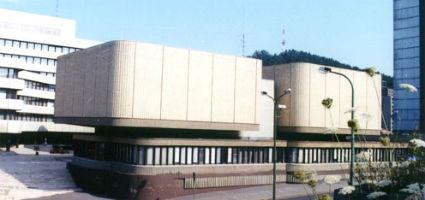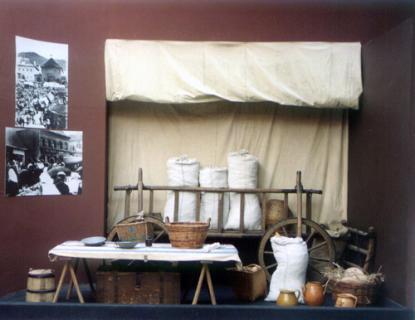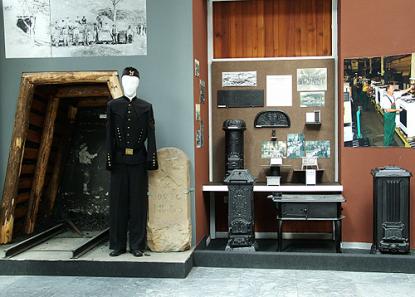2024. December 26. Thursday
Bela Dornyay Museum - Salgótarján
 |
Address: 3100, Salgótarján Múzeum tér 2.
Phone number: (32) 520-700
E-mail: titkarsag@dornyaymuzeum.hu
Opening hours: Tue-Sun 9-16
|
Museum tickets, service costs:
|
Ticket for adults
|
630 HUF
|
/ capita
|
|
Ticket for students
|
315 HUF
|
/ capita
|
|
Ticket for students
(valid for the chamber exhibition)
|
100 HUF
|
/ capita
|
|
Ticket for pensioners
|
315 HUF
|
/ capita
|
|
Ticket for pensioners
(valid for the chamber exhibition)
|
100 HUF
|
/ capita
|
|
Ticket for families
|
1500 HUF
|
|
|
Combined ticket for adults
(valid for the Nógrád Historical Museum + the Mining Exhibition)
|
1050 HUF
|
/ capita
|
|
Combined ticket for students
(valid for the Nógrád Historical Museum + the Mining Exhibition)
|
525 HUF
|
/ capita
|
|
Combined ticket for pensioners
(valid for the Nógrád Historical Museum + the Mining Exhibition)
|
525 HUF
|
/ capita
|
|
Sponsors' ticket
(minimal cost )
|
100 HUF
|
/ capita
|
|
Professional guide
|
3150 HUF
|
|
|
Photography
|
300 HUF
|
|
|
Video
|
500 HUF
|
The permanent exhibition of the museum represents the history of Nógrád county in 7 large units. The introductory part of the exhibition demonstrates the versatile activities of the people living here from the migration of nations to the Hungarian conquest.

After the short introduction we might gain an insight into the world of the middle nobility. The nobility modernised their agricultural activities and built their classicist mansions which were also used as centers of the intellectual life.
The next chapter of the exhibition shows us the process of the county administration and changes. We emphasized the changes made in the region and districts of the county.
The exhibition entitled the "world of modernization" represents a resolutely agricultural land turning into an industrial region. The industrial development of the 19th century brought significant results. However, the coal mining, which used to play an important role in the industrial development, has by today totally ceased to exist.
Another unit of the exhibition shows us pictures of the history of the two world wars. The troops of Nógrád passed through the bloodiest battlegrounds of the 1st world war. In the 2nd world war they brought the biggest sacrifice in the battles fought alongside the Don.
In the unit entitled "The world of revolutions" we talk about the 1956 revolution and its circumstances. A tragic event of the county was the volley taken place in Salgótarjánban on 8th December, where 46 people lost their life.
The final unit of the exhibition displays the life of the modern schools, the educational opportunities of the people and the art works made in the region.
dr. Ferenc Szvircsek

After the short introduction we might gain an insight into the world of the middle nobility. The nobility modernised their agricultural activities and built their classicist mansions which were also used as centers of the intellectual life.
The next chapter of the exhibition shows us the process of the county administration and changes. We emphasized the changes made in the region and districts of the county.
The exhibition entitled the "world of modernization" represents a resolutely agricultural land turning into an industrial region. The industrial development of the 19th century brought significant results. However, the coal mining, which used to play an important role in the industrial development, has by today totally ceased to exist.
Another unit of the exhibition shows us pictures of the history of the two world wars. The troops of Nógrád passed through the bloodiest battlegrounds of the 1st world war. In the 2nd world war they brought the biggest sacrifice in the battles fought alongside the Don.
In the unit entitled "The world of revolutions" we talk about the 1956 revolution and its circumstances. A tragic event of the county was the volley taken place in Salgótarjánban on 8th December, where 46 people lost their life.
The final unit of the exhibition displays the life of the modern schools, the educational opportunities of the people and the art works made in the region.
dr. Ferenc Szvircsek
|
Related activities
|
|||

